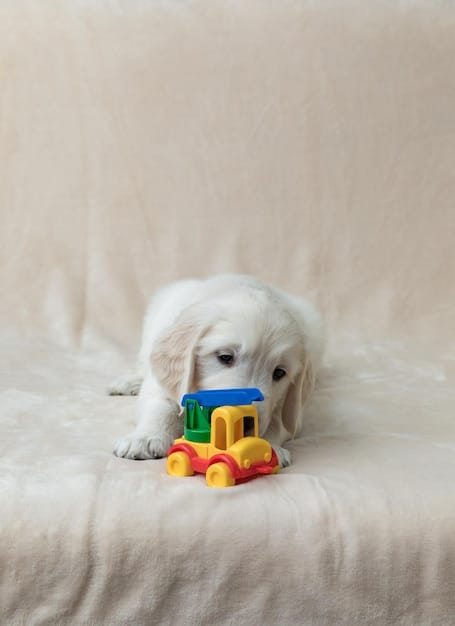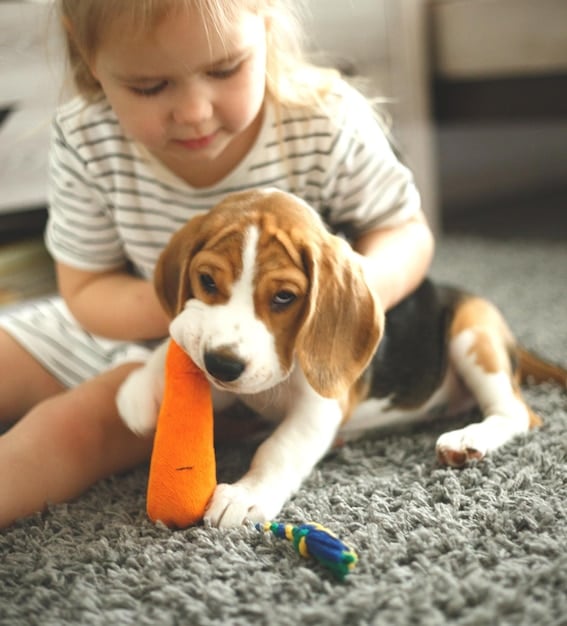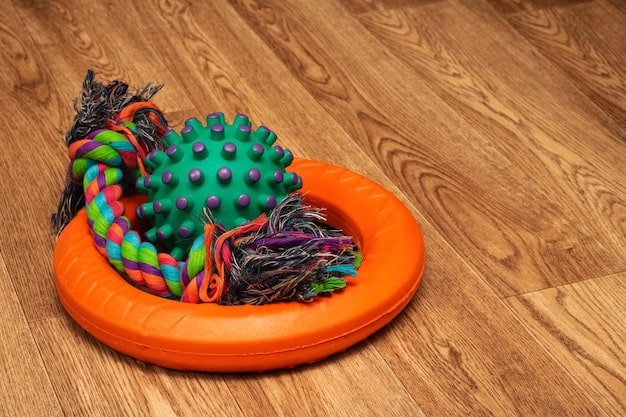Stop Destructive Chewing: Your 3-Week Dog Behavior Guide

Stopping destructive chewing in dogs involves understanding the reasons behind the behavior and implementing consistent training, providing appropriate chew toys, managing the dog’s environment, and ensuring sufficient mental and physical stimulation over a period of about three weeks.
Is your furry friend turning your home into a demolition zone? Destructive chewing is a common problem for dog owners, but it’s a behavior that can be redirected. This guide, How to Stop Destructive Chewing: A Guide to Redirecting Dog Behavior in 3 Weeks, will give you practical strategies to curb this habit and create a happier, more harmonious home for both you and your dog.
Understanding Why Your Dog Chews
Before tackling the problem of destructive chewing, it’s crucial to understand why dogs do it in the first place. Chewing is a natural behavior for dogs, serving various purposes from exploration to dental health. However, when directed at inappropriate items, it becomes problematic. Understanding the root cause is the first step in addressing it effectively.
Teething Puppies
Puppies explore their world through their mouths. As they teethe, the act of chewing provides relief from the discomfort of emerging teeth. This is a normal behavior, but it’s essential to provide them with appropriate chew toys to direct their chewing instincts.
Providing a variety of textures and sizes of puppy-safe toys can help them get through this phase without damaging your belongings. Remember, consistency is key; redirect them to their toys whenever they start chewing on something they shouldn’t.
Anxiety and Boredom
For adult dogs, destructive chewing is often a sign of anxiety or boredom. Dogs are social animals, and when left alone for extended periods, they may develop destructive habits as a way to release pent-up energy or cope with separation anxiety.
- Ensure your dog gets adequate exercise before being left alone. A tired dog is less likely to engage in destructive behaviors.
- Provide puzzle toys and treat-dispensing toys to keep them mentally stimulated while you’re away.
- Consider dog daycare or hiring a dog walker if your dog suffers from severe separation anxiety.

By understanding the underlying reasons for your dog’s chewing habits, you can begin to address the issue more effectively and tailor your approach to their specific needs. From providing appropriate toys for teething puppies to addressing anxiety in adult dogs, a proactive approach is essential.
Setting Up a Chew-Proof Environment
Creating a safe and chew-proof environment is crucial in preventing destructive chewing. This involves removing tempting items from your dog’s reach and making sure they have access to appropriate chew toys. A well-managed environment sets the stage for success in redirecting your dog’s behavior.
Remove Temptations
Walk through your home and identify items that your dog might find tempting to chew on. These could include shoes, clothing, books, remote controls, and anything else within their reach. Store these items out of sight or in areas your dog cannot access.
Pay close attention to items at your dog’s eye level or those that are easily accessible from the floor. Consider using storage bins or shelves to keep things out of reach. This simple step can significantly reduce the temptation for your dog to chew on inappropriate items.
Create a Designated Chew Zone
Establish a specific area where your dog is allowed to chew. This could be their bed, a playpen, or a particular room. Fill this area with a variety of appropriate chew toys to keep them entertained and engaged. Make this zone a positive and inviting space for your dog.
- Rotate the toys regularly to keep them interesting and prevent boredom.
- Use positive reinforcement to encourage your dog to spend time in their chew zone.
- Consider using a crate as a safe space where your dog can relax and chew on their toys.
By creating a chew-proof environment, you’re minimizing the opportunities for your dog to engage in destructive chewing. This proactive approach helps set them up for success and makes it easier to redirect their behavior towards appropriate chew items.
Choosing the Right Chew Toys
Selecting the right chew toys is essential for satisfying your dog’s natural chewing instincts and preventing destructive behavior. Not all chew toys are created equal; it’s important to consider your dog’s size, age, and chewing strength when making your choices. Providing a variety of textures, sizes, and materials will keep your dog engaged and interested.
Consider Durability
When choosing chew toys, durability is key. Opt for toys made from materials that can withstand your dog’s chewing habits. Hard rubber toys, such as those made by Kong, are a popular choice for many dogs. Avoid toys with small parts that can be easily chewed off and swallowed, as these can pose a choking hazard.
Supervise your dog while they’re playing with new toys to ensure they’re not breaking them into small pieces. Replace any toys that become damaged or worn to prevent your dog from ingesting potentially harmful materials.

Offer Variety
Dogs, like humans, can get bored with the same old toys. Offering a variety of chew toys can help keep them entertained and satisfied. Consider toys with different textures, shapes, and functions. Puzzle toys that dispense treats can also provide mental stimulation and keep your dog engaged for longer periods.
- Rope toys are great for dogs who enjoy chewing and tugging.
- Soft plush toys can provide comfort and companionship.
- Dental chew toys can help promote good oral hygiene.
By selecting the right chew toys, you’re not only satisfying your dog’s natural chewing instincts but also helping to prevent destructive behavior. Offering a variety of durable and engaging toys ensures that your dog has appropriate outlets for their energy and chewing needs.
Training and Redirection Techniques
Training and redirection are essential components of stopping destructive chewing. These techniques involve teaching your dog what they can chew on and redirecting them whenever they start chewing on inappropriate items. Consistency and positive reinforcement are key to success in this area.
The “Leave It” Command
Teaching your dog the “leave it” command can be extremely useful in preventing destructive chewing. This command teaches your dog to ignore or move away from something they are interested in. Start by placing a treat in your hand and closing your fist around it. When your dog tries to get the treat, say “leave it.” Once they stop trying, open your hand and give them the treat.
Gradually increase the difficulty by placing the treat on the floor and covering it with your hand. Repeat the “leave it” command and reward them when they back away. Eventually, you can remove your hand and allow them to resist the temptation completely. This command can be used in various situations to prevent your dog from chewing on things they shouldn’t.
Redirection with Positive Reinforcement
Whenever you catch your dog chewing on something they shouldn’t, immediately redirect their attention to an appropriate chew toy. Offer the toy and praise them when they start chewing on it. Positive reinforcement, such as treats and praise, can help them associate the chew toy with positive experiences.
- Keep chew toys readily available in areas where your dog spends the most time.
- When redirecting, use a calm and encouraging tone of voice.
- Avoid scolding or punishing your dog, as this can lead to anxiety and worsen the problem.
Training and redirection are powerful tools in preventing destructive chewing. By teaching your dog the “leave it” command and consistently redirecting them with positive reinforcement, you can help them learn what they can and cannot chew on.
Managing Anxiety and Boredom
Addressing the underlying causes of destructive chewing, such as anxiety and boredom, is crucial for long-term success. Dogs who are bored or anxious are more likely to engage in destructive behaviors as a way to release pent-up energy or cope with their emotions. Providing adequate mental and physical stimulation can help alleviate these issues.
Provide Plenty of Exercise
Regular exercise is essential for a dog’s physical and mental well-being. A tired dog is less likely to engage in destructive chewing. Aim for at least 30 minutes to an hour of exercise each day, depending on your dog’s breed, age, and energy level. This could include walks, runs, playing fetch, or other activities they enjoy.
Exercise not only helps burn off excess energy but also provides mental stimulation through exploration and socialization. Consider varying your walking routes to keep things interesting and engaging for your dog.
Mental Stimulation
Mental stimulation is just as important as physical exercise in preventing destructive chewing. Puzzle toys, treat-dispensing toys, and interactive games can help keep your dog mentally engaged and prevent boredom. Rotate these toys regularly to keep them from losing interest.
- Hide treats around the house and encourage your dog to find them.
- Teach your dog new tricks and commands.
- Use food puzzles to make mealtime more challenging and engaging.
By managing anxiety and boredom, you’re addressing the root causes of destructive chewing. Providing plenty of physical exercise, mental stimulation, and social interaction can help your dog feel more relaxed and satisfied, reducing the likelihood of destructive behaviors.
Consistency and Patience
Consistency and patience are paramount when addressing destructive chewing. It takes time and repetition for your dog to learn new habits. Avoid getting discouraged if you don’t see immediate results. Stay consistent with your training and management techniques, and eventually, your dog will learn to redirect their chewing instincts appropriately.
Establish a Routine
Dogs thrive on routine. Establishing a consistent daily schedule can help reduce anxiety and prevent destructive chewing. This routine should include regular feeding times, exercise, playtime, and rest. Knowing what to expect each day can help your dog feel more secure and relaxed.
Be consistent with your training commands and expectations. Use the same cues and rewards each time you redirect your dog’s chewing behavior. Consistency helps reinforce the desired behavior and makes it easier for your dog to understand what you want them to do.
Stay Positive
It’s important to stay positive and avoid getting frustrated when addressing destructive chewing. Punishing your dog can create anxiety and worsen the problem. Instead, focus on rewarding positive behavior and redirecting inappropriate chewing with patience and encouragement.
- Celebrate small victories and acknowledge your dog’s progress.
- Remember that setbacks are normal and don’t give up on your training efforts.
- Consult with a professional dog trainer or behaviorist if you’re struggling to manage the problem on your own.
Consistency and patience are vital for long-term success in preventing destructive chewing. By establishing a routine, staying positive, and persisting with your training efforts, you can help your dog learn new habits and redirect their chewing instincts appropriately.
| Key Point | Brief Description |
|---|---|
| 🦴 Understand Chewing | Determine why your dog is chewing, whether it’s teething, anxiety, or boredom. |
| 🏡 Chew-Proof Home | Remove tempting items and create a designated chew zone for your dog. |
| 🧸 Right Chew Toys | Provide durable and varied chew toys to satisfy chewing instincts. |
| 🐾 Training & Redirection | Use “leave it” command and positive reinforcement to redirect chewing. |
FAQ
▼
Sudden destructive chewing often indicates increased anxiety, boredom, or a change in environment. Rule out medical issues with a vet visit and assess recent changes in your dog’s routine or environment.
▼
A variety of 4-5 chew toys is ideal to keep your dog interested and prevent boredom. Rotate them regularly to maintain their novelty and engagement.
▼
Rawhide chews can pose a choking risk or cause digestive issues. Supervise your dog closely and consider safer alternatives like durable rubber or nylon chew toys.
▼
Chewing when left alone is often a sign of separation anxiety. Increase exercise before departure, provide a safe chew zone, and consider consulting a behaviorist for severe cases.
▼
With consistent training and management, you can see improvements in 3 weeks. However, complete behavior modification may take several months, depending on the dog’s age and the severity of the habit.
Conclusion
By understanding the reasons behind destructive chewing and implementing consistent training, environmental management, and providing appropriate chew toys, you can effectively redirect your dog’s behavior. Remember, consistency, patience, and positive reinforcement are key to creating a happier and more harmonious home for both you and your furry friend.





